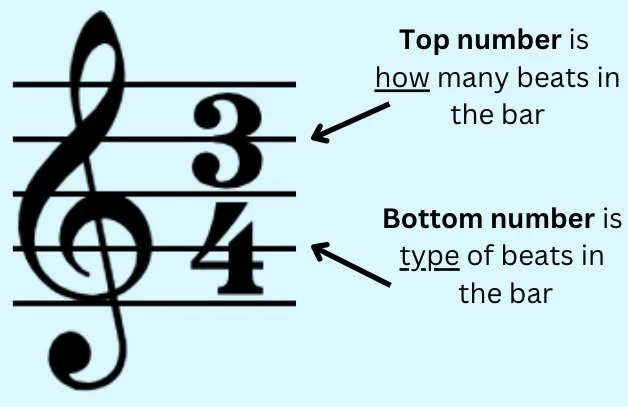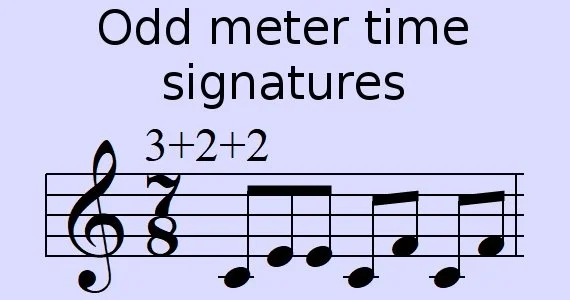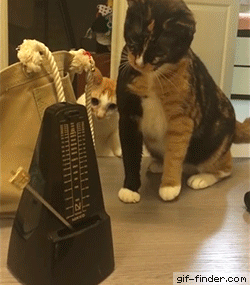By The Landlord
“Time moves in one direction, memory in another.” – William Gibson
“Time flies over us, but leaves its shadow behind.” – Nathaniel Hawthorne
“The only reason for time is so that everything doesn't happen at once.” – Albert Einstein
“Forever is composed of nows.” – Emily Dickinson
“Well-timed silence is the most commanding expression.” – Mark Helprin
“Time isn't the main thing. It's the only thing.” – Miles Davis
Clocks may tick, pendulums swing, planets spin, and tides roll, unerringly out and in. But life’s rhythms throw out often messier, more irregular patterns into the water, skittering and skimming against, across, up, over, before finally plunging down and in. Our pulses race, then slow, then accelerate again, pushing against the steady beat and the natural flow. Unlike a regular measure, bar or beat, humans are rarely so neat, certainly imperfect, with lives much incomplete
Our perception of time varies constantly, so perhaps that's why music makes sense to us in a primal, deep-seated way. It reflects and captures this contradiction, a combination of tempo and the temperamental, the constant and capricious, the immovable and the mercurial. With a simpler beat, your classic four-to-the-bar, used in the majority of millions of songs, it can help synchronise and unify us into dance. That's fine, but that still leaves much more.
And even in the less common but still very popular waltz time, three beats to the bar, a topic that's come up before, there's still a conventional and stable steadiness.
So this week it's time to go out of time, to explore rhythmic oddity and often irregularity, and while time signatures can be described in terms of note values and measures, this week is about listening and feeling, it is as much physical as cerebral, and is certainly not exclusive to those with more technical knowledge. There’s a simpler way in.
So, there are examples to follow, but please don't be put off by any jargon. It just comes down to this. If you suspect a song has an uncommon time signature, but can't pin down what it is, just test it out with a bit of simple counting of what you feel is a natural bar, a repeating pattern of beats or rhythm.
And so far as nominating songs is concerned, whatever is going on in a song in melody or riffs, listen to the basic beat. First try counting 1, 2, 1, 2 or 1, 2, 3, 4, and also 1, 2, 3 - 1, 2, 3, and if none feels like it works or fits, then the song in question is worth a shout.
And perhaps also it may be more fun, when suggesting a song, to describe the feel of an unusual time signature rather than necessarily nailing down its numerical value. Does it drag, shuffle, hobble, skip, or unexpectedly leap like a march hare from the bush or a flying fish from the waves? And it might even loop back to last week’s topic of coolness.
But just to define this a little in a technical fashion, a time signature in western musical notation consists of two numbers that govern the behaviour of a bar or measure, the repeating pattern of any rhythm. The bottom number is always divisible by two, so is sometimes 2, most often 4, sometimes 8, even less so 16, all denoting a steady length of beat in a bar: 2 corresponds to the half note (minim), 4 to the quarter note (crotchet), 8 to the eighth note (quaver), and 16 to the sixteenth note (semiquaver). These then are the Steady Eddies of the rhythmic meter.
A simple explainer - 3/4 also 4/4 are not unusual
7/8 is less common, squeezing 7 beats into the space of 8
Just as a comedian always needs a straight man, just as society needs different kinds of people to collaborate, to create something, the steady lower number needs to mix with another one, as shown above it, to generate momentum and simplicity or complexity. It might match and go straight along with them, or more creatively move in a contraflowing fashion.
The upper number indicates how many of those notes are fitted neatly, or squeezed in unusually in that bar. So for example, while conventionally a 4/4 or common time means a neat match to number and length in a repeating bar, 3/4 also makes for a recognisably, slightly slower, shuffling waltz rhythm, but 5/4, for example, suddenly means fitting five notes into the space of four, creating an eccentric, oddball but attractive irregularity.
A 5/4 time signature comes in, most famously, with Dave Brubeck's and Quartet's Take Five (chosen before for the topic of numbers 1-10). Sounding complex at first, it can be heard clearly by counting 1 to 5 over and over.
But exactly the same time signature, 5/4 comes in the very contrasting style of Nick Drake's River Man (previously chosen for the topic of rivers, unsurprisingly), and alongside the voice and lyrics, beautifully expresses that feeling of flow and counterflow.
Many other examples of time signatures can be found all over online, including on a Wikipedia page.
But imagine then, how this becomes stranger when you have 7/4, 7/8, 9/8, or even 17/16. Such time signatures are also unusual, but actually more familiar that we might imagine. While classical or jazz composers might create these with a high level of technical knowledge, unconventional time signatures in other genres may come instinctively, created in the flow of a studio jam and then embedded into a song. Only last night I was at a gig by the wonderfully eccentric, creative, experimental, post-punk, krautrock, alternative-rock Welsh band Islet, who use several unusual time signatures and sounds, but whose lead singer and bassist Emma Daman Thomas afterwards told me they simply arrive in the throws of impulse and creativity.
In their own time: Islet
Some people are simply wired differently. Consider for example the utterly alternative inner timing of certain actors, such as the pausing drawl of Jennifer Jason Leigh (especially in the latest Fargo series), or of course, Christopher Walken, with unique timing and meter, perhaps fashioned from his unusual upbringing in Queens, with his German father and Glaswegian mother. Appropriately then, check the delivery with and against a normal beat, in his famous watch speech from Pulp Fiction:
But back to the music. There are many songs to explore but here's another zedded example. Peter Gabriel's Solsbury Hill, (previously chosen for the topic of motivation) uses a 7/4 time that's unusual for several reasons, a combination of 3/4 and 4/4, and just before the chorus a bar of 4/4.
Even the most accessible and best known songs, The Beatles' All You Need Is Love is in 7/4 until the chorus which is in 4/4, which surely comes instinctively rather than in a formal compositional form, and sometimes it is the switch between time signatures that gives a song a distinctive feel.
There's also a very well-known number by Pink Floyd that brilliantly switches from 7/8 into a 4/4...
6/4 is also another odd one, sometimes mixing 2/4 and 4/4 alternatively and is a stranger version of 3/4, and occurs in songs by Radiohead, who will certainly come up a bit on this topic. And this time signature even comes in artists who you'd expect to stick to regular beats, such as dance music's Chemical Brothers or straight-up rockers like Foo Fighters. Here’s Chemical Brothers’ Galvanise, featuring Q-Tip on vocals and a sample of Najat Aatabou's song Hadi Kedba Bayna (Obvious Lie), it’s 4/4 in the verse, but switches to 6/4 in the chorus and main hook, and is a song picked before for great middle eights.
Perhaps another way in to this is also to simply consider artists who push the boundaries in all sorts of ways, from Captrain Beefheart to Bjork to Fiona Apple, Sufjan Stevens to PJ Harvey, and whose work is filled with different time signatures. But there are many others too …
Often offbeat; Frank Zappa
You may want to delve into jazz, which will a rich source, and classical of course, but this topic will surely also move inevitably and effortlessly (perhaps that’s not quite the word) into the world of prog and experimental rock, from Genesis (err, 13/4 anyone?) to Yes, and with ever greater complexity, Frank Zappa and King Crimson, whose appropriately named album, Discipline, is rammed with a mind-bogglingly indiscernible time signature interchanges as Robert Fripp, Adrian Belew, Tony Levin and Bill Bruford weave across a vast range in 8 and 16 meters, even a possibly a 17/16 at one point. Hmm. Hard to beat …
But as mentioned above, this is just about counting on your instincts (and fingers) and so it’s time to turn this topic over you, keen-eared listeners and readers, and particularly to the clever musical brain and finely tuned taste of this week's guest guru, Barbryn! Have a listen, have fun, and suggest your numbers (but not necessarily in numbers) in comments below, to keep the meter rolling. Deadline is 11pm UK time on Monday, for playlists published next week. We're counting on you.
Playing with time …
New to comment? It is quick and easy. You just need to login to Disqus once. All is explained in About/FAQs ...
Fancy a turn behind the pumps at The Song Bar? Care to choose a playlist from songs nominated and write something about it? Then feel free to contact The Song Bar here, or try the usual email address. Also please follow us social media: Song Bar Twitter, Song Bar Facebook. Song Bar YouTube, and Song Bar Instagram. Please subscribe, follow and share.
Song Bar is non-profit and is simply about sharing great music. We don’t do clickbait or advertisements. Please make any donation to help keep the Bar running:






